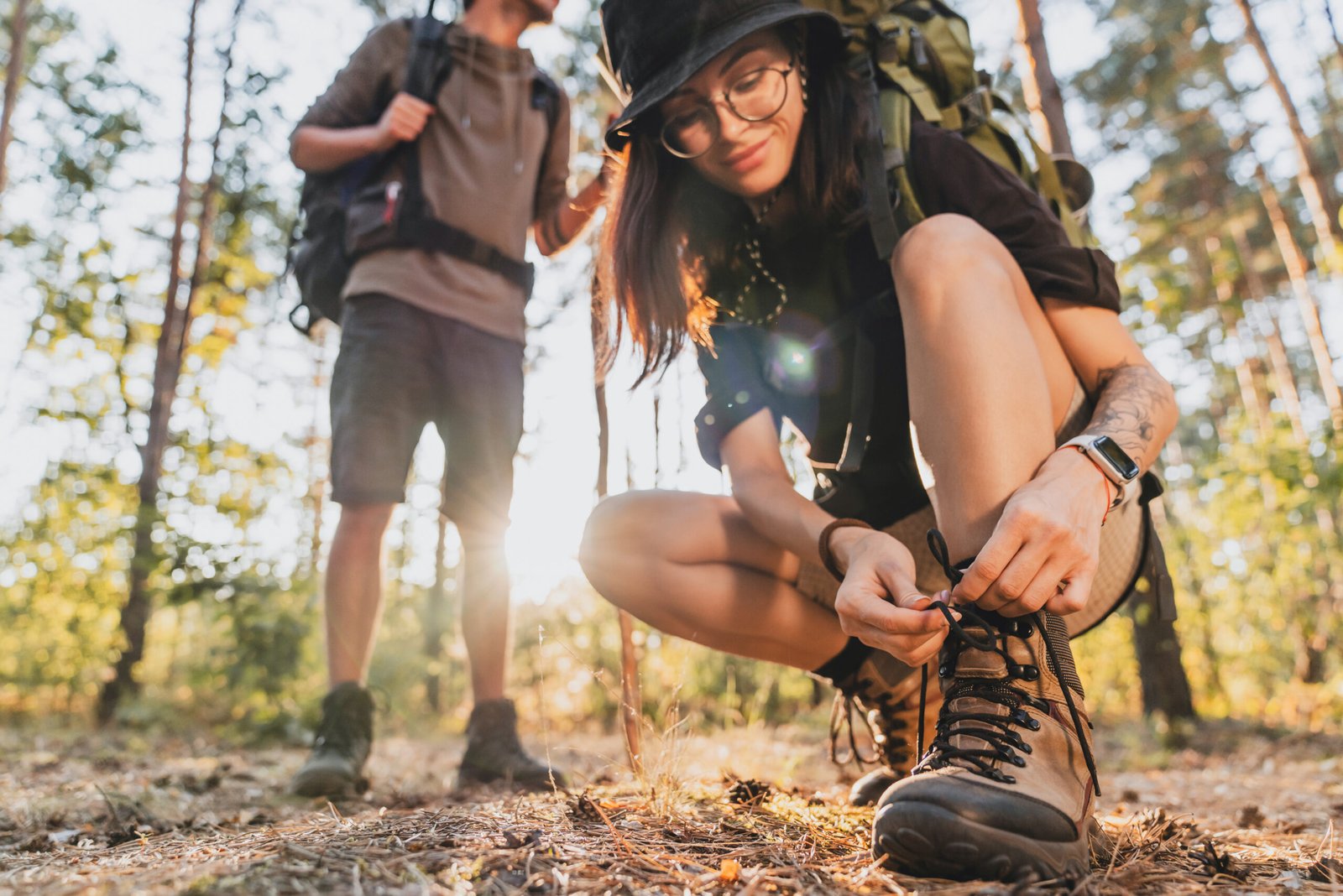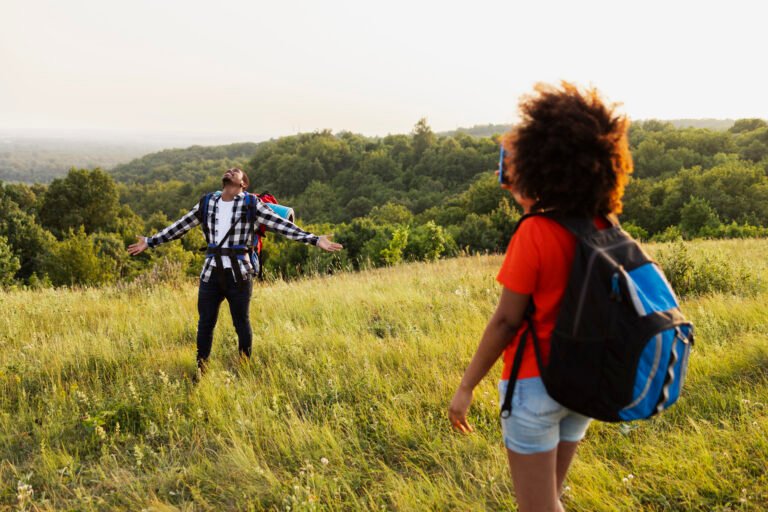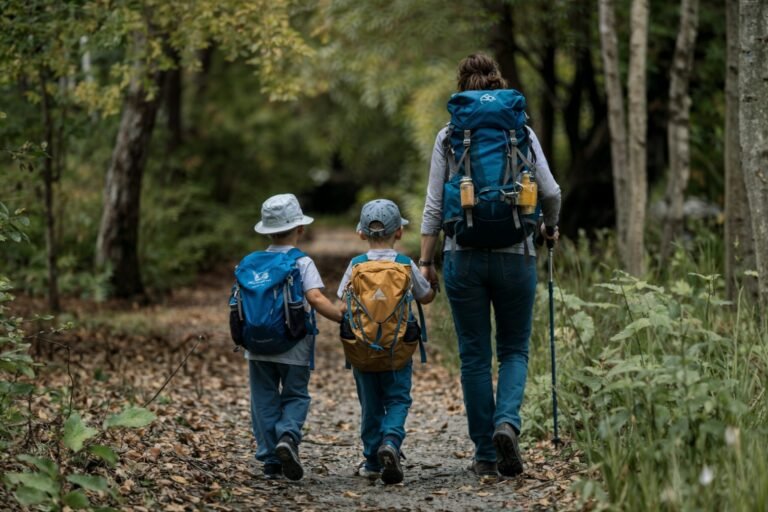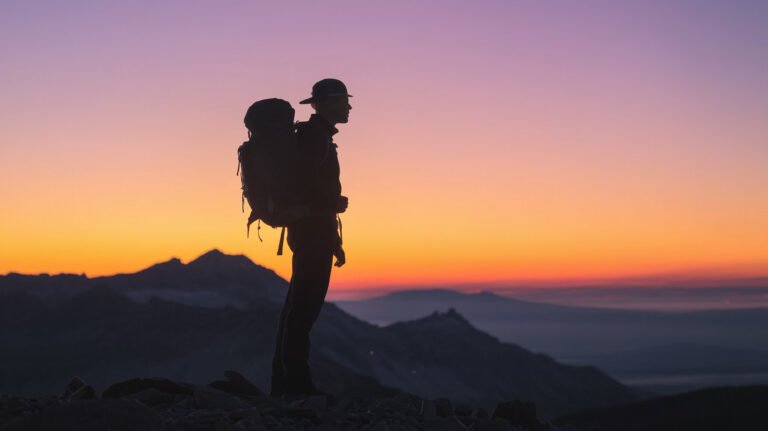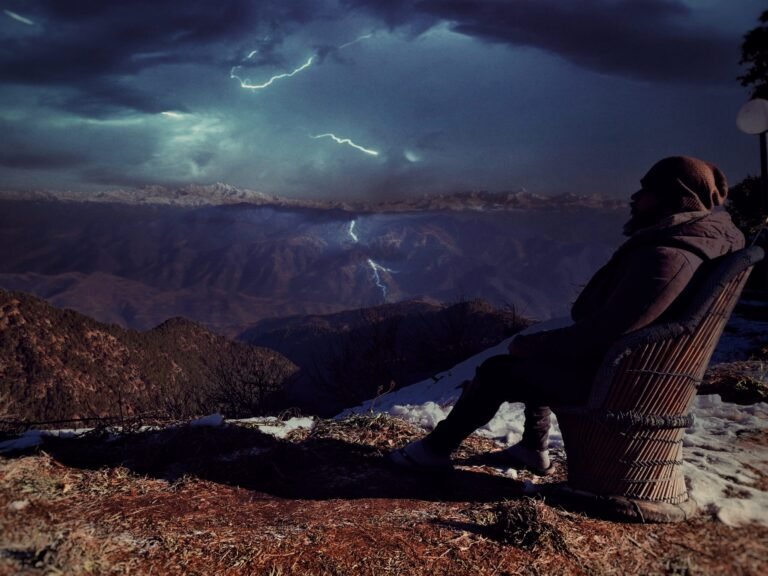The Psychology of Survival: How Mental Preparation Is Revolutionizing Hiking Safety in 2025
Stay safe on the trails with our expert guide to Hiking Safety. Discover the psychology of survival and mental preparation techniques for a secure hiking experience.
Modern adventurers know that a successful trek relies on more than sturdy boots or a reliable backpack. Mental preparation has become the cornerstone of outdoor safety, reshaping how people approach wilderness challenges. By blending self-awareness with strategic planning, hikers can transform potential risks into manageable scenarios. Let’s discuss Hiking Safety.
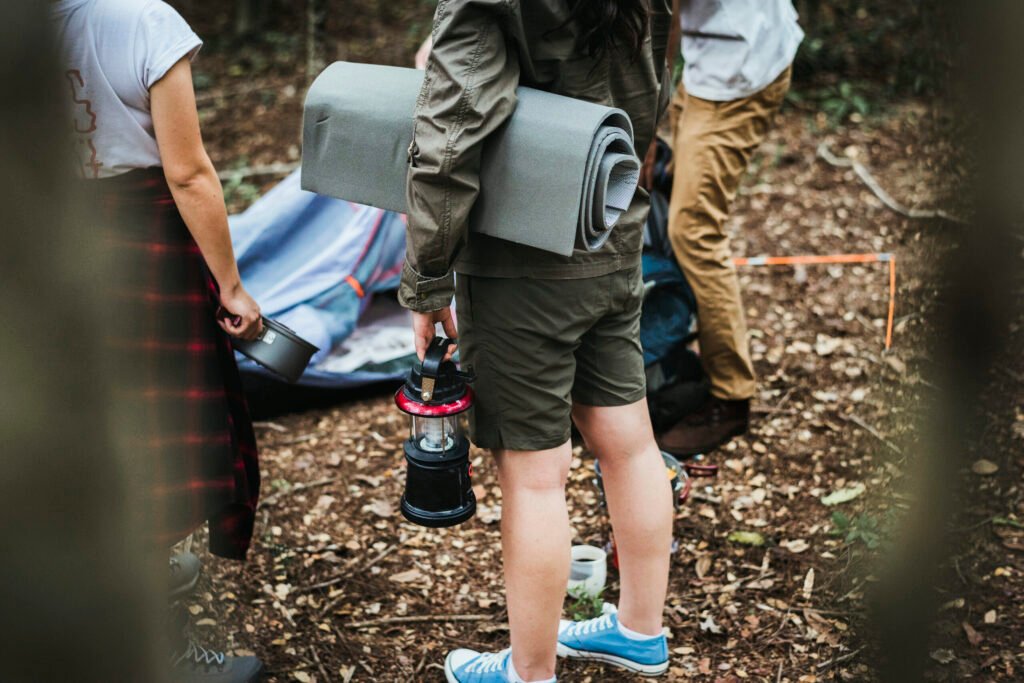
The National Park Service emphasizes that knowing your limits is as critical as checking trail conditions. Carrying the 10 Essentials—like a map, extra food, and weather-appropriate gear—creates a safety net. But equally vital is training your mind to stay calm during unexpected setbacks, from sudden storms to navigation errors.
Before hitting the trail, seasoned explorers recommend studying terrain details and sharing trip plans with a trusted friend. This dual focus on preparation and communication reduces risks while fostering confidence. Tools like weather apps and physical maps remain indispensable, but mental resilience often determines outcomes when technology fails.
For those building essential hiking skills, balancing physical stamina with psychological readiness unlocks new levels of safety. Upcoming sections will dive into practical strategies for mastering trail navigation, optimizing gear choices, and staying connected even in remote areas. Because in 2025, survival isn’t just about reacting—it’s about thinking ahead.
Introduction to the Psychology Behind Survival on the Trails
Your mindset can mean the difference between triumph and trouble when exploring wild spaces. The psychology of survival—how thoughts shape actions—has shifted from an afterthought to a core skill for trail enthusiasts. In 2025, adventurers treat mental readiness like essential gear, not just optional advice.
Exploring the Connection Between Mindset and Safety
Clear thinking turns potential crises into solvable puzzles. Studies show hikers who practice scenario planning—like imagining sudden weather shifts—react 40% faster during real emergencies. For example, the National Park Service urges travelers to leave detailed trip plans with a trusted friend. This simple step ensures someone knows your route and expected return time.
Calm decision-making also helps when facing risks like wildlife encounters or dehydration. Carrying extra water matters, but so does recognizing when to pause and reassess. Overconfidence often leads to avoidable errors, such as ignoring trail markers or pushing past fatigue.
The Evolving Landscape of Outdoor Adventure
Modern explorers blend traditional skills with cognitive strategies. Apps can’t replace intuition when dense fog obscures a path or a storm cuts off communication. Knowing when to turn back, even after hours of effort, separates seasoned hikers from statistic-makers.
Key practices include:
- Reviewing terrain maps aloud to reinforce memory
- Setting turnaround times to avoid night travel
- Carrying whistle signals for emergencies
Today’s trails demand more than stamina—they require humility. Asking for help isn’t weakness; it’s wisdom. By prioritizing mental agility, adventurers unlock safer, more rewarding journeys.
Understanding Mental Preparation for a Secure Hiking Experience
Trail success in 2025 hinges on cognitive fitness as much as physical endurance. Experts now prioritize mental conditioning to handle unexpected challenges, from sudden weather shifts to equipment failures. This proactive approach transforms anxiety into actionable problem-solving.
Building Confidence Through Training
Mock scenarios like navigating dense fog or treating blistered feet sharpen decision-making under pressure. The National Park Service advises practicing “what-if” drills during local walks. For example, time yourself relocating a marked spot using only a map and compass. These exercises build muscle memory for critical moments.
One hiker’s story stands out: After getting lost in Utah’s backcountry, her weekly navigation rehearsals helped her pinpoint a water source using terrain contours. “Training turns panic into procedure,” she noted.
Stress Management and Decision-Making on the Trail
When storms roll in or trails vanish, structured breathing (inhale 4 counts, hold 7, exhale 8) stabilizes focus. Pair this with a simple framework:
- Assess risks calmly
- Prioritize immediate needs (shelter, hydration)
- Act decisively
Groups should assign roles beforehand—like navigator or gear checker—to prevent chaos. Solo adventurers benefit from pre-set turnaround times based on difficulty levels. Always pack backup items: extra batteries, a printed map, and a charged satellite phone.
Regular self-checks (“Am I rushing?” “Is this route sustainable?”) maintain situational awareness. As trail conditions evolve, so should your mindset. Because in wilderness travel, preparation isn’t just about gear—it’s about rewiring how you think.
Hiking Safety: Essentials & Key Techniques for Modern Explorers
The wilderness rewards those who pair reliable gear with a resilient mindset. While sturdy hiking boots protect your feet, mental agility safeguards your journey. National Park Service guidelines emphasize carrying the 10 Essentials—non-negotiable items that address basic needs and unexpected emergencies.
Why Mental Readiness is as Critical as Physical Preparation
Your pack should include navigation tools like a topographic map and compass, but knowing how to use them under stress matters more. A 2024 study found hikers who practiced route visualization made 30% fewer wrong turns. Always check weather forecasts, but also rehearse contingency plans for sudden storms.
Essential items for every trip:
- High-calorie food and water purification tablets
- Multi-tool knife and emergency shelter
- Headlamp with extra batteries
Groups should designate a decision-maker to manage risk, while solo travelers benefit from sharing detailed plans with contacts. The soft hiking approach proves that pacing yourself mentally prevents fatigue as effectively as proper hiking boots prevent blisters.
Review trail conditions the night before, but stay flexible if obstacles arise. Packing the right gear builds confidence—mastering crisis response builds true security. When preparation meets adaptability, every adventure becomes safer and more rewarding.
Planning and Preparing Your Hike with a Tactical Mindset
A tactical approach transforms routine treks into secure, rewarding adventures. Modern explorers treat route planning like military strategists—anticipating variables while building adaptable frameworks. This mindset turns uncertainty into controlled challenges.
Creating a Comprehensive Trail Plan
Start by dissecting your route’s difficulty using elevation charts and recent trip reports. Match your group’s fitness level to terrain demands. The National Park Service advises:
“Always note alternative exit points and water sources on your map. A single detour could prevent a crisis.”
| Step | Action | Purpose |
|---|---|---|
| 1 | Research trail alerts | Avoid closures or wildlife risks |
| 2 | Pack 25% extra food/water | Buffer for delays |
| 3 | Share itinerary with a friend | Enable emergency response |
| 4 | Mark check-in times | Track progress remotely |
Building a Reliable Itinerary for Emergencies
Your plan should address “what-ifs” like sudden storms or injuries. For example, Yosemite rangers recommend carrying a printed map with rally points every 2 miles. Assign roles:
- Navigator: Monitors progress using GPS or landmarks
- Timekeeper: Ensures group stays on schedule
- First Aid Lead: Manages medical emergencies
Update your emergency contacts if you alter your route. Clothing layers and backup batteries often decide outcomes when temperatures drop. As one Appalachian Trail survivor noted, “Preparation isn’t paranoia—it’s practical insurance.”
Selecting the Right Equipment and Clothing for Your Adventure
The right gear acts as your first line of defense against unpredictable trails. Quality equipment reduces risk while boosting confidence, whether you’re tackling rocky slopes or sudden downpours. Outdoor experts agree: proper preparation starts with gear that matches your specific route and conditions.
Smart Gear Choices for Every Scenario
Sturdy boots with ankle support and grippy soles prevent slips on wet terrain. Always test them with the socks you’ll wear on the trail—thick wool or synthetic blends reduce blister risks. Waterproof jackets and moisture-wicking base layers adapt to weather shifts, keeping you dry from dawn to dusk.
Pack these essentials for any trip:
- A personal locator beacon (when cell phone service drops)
- Lightweight emergency shelter and purification tablets for water
- Extra clothing layers for temperature swings
Check gear thoroughly before departure. Inspect boot seams, zippers, and backpack straps. One Appalachian Trail thru-hiker notes: “My gear checklist has saved me from three potential disasters—always verify twice.”
Read reviews and consult outdoor shops for tips on durable brands. Trial runs on local paths reveal how gear performs under real trail stresses. When your equipment aligns with the environment, every step becomes safer and more intentional.
Navigating Trail Conditions and Environmental Challenges
Trails test resilience as much as they reward curiosity, demanding real-time adaptability from explorers. Rapid shifts in weather or unstable terrain require quick thinking paired with practiced techniques. The National Park Service reports that 65% of trail emergencies stem from underestimated environmental factors—making situational awareness non-negotiable.
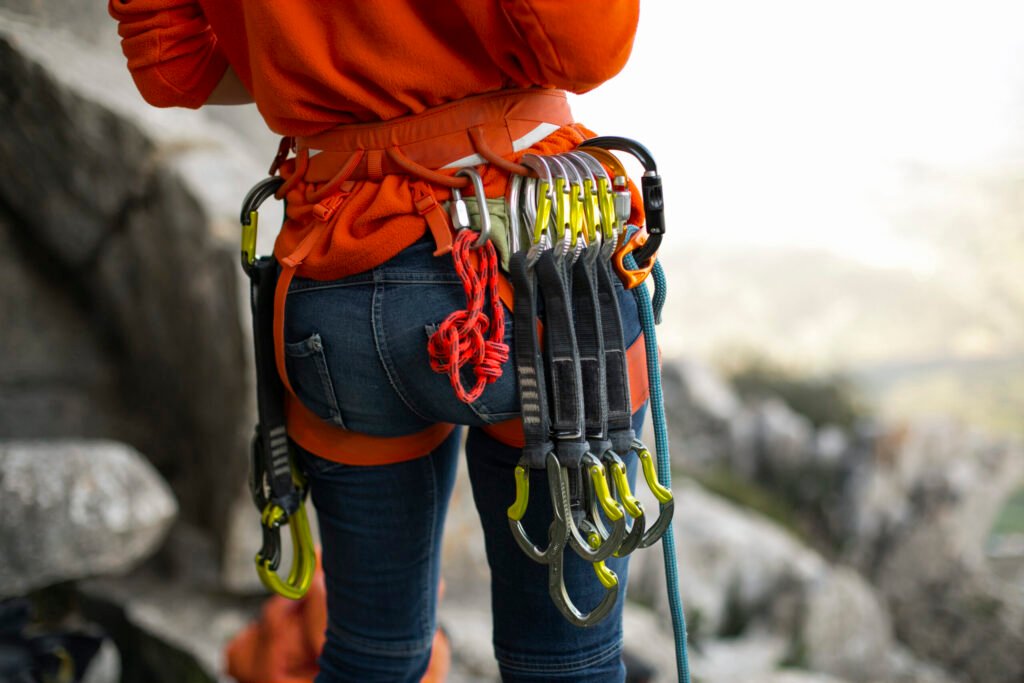
Adapting to Weather Fluctuations and Terrain Hazards
Check forecasts hourly before departure, but assume conditions will change. A Grand Canyon hiker shared how dark clouds prompted her group to descend early, avoiding a flash flood. “Flexibility beats stubbornness every time,” she noted.
| Condition | Strategy | Outcome |
|---|---|---|
| Sudden storms | Seek low ground, avoid ridges | Reduces lightning risk |
| Rocky terrain | Shorten stride, use trekking poles | Prevents ankle injuries |
| Wildlife sightings | Stay calm, retreat slowly | Minimizes confrontation |
Waterproof boots with Vibram soles grip slippery surfaces, protecting your feet during river crossings. Pair them with gaiters to keep debris out. If trails vanish, pause and cross-reference your map with visible landmarks like rock formations or streams.
Carry a personal locator beacon for emergencies—73% of rescues initiated via these devices succeed within 6 hours. Test it at trailheads to confirm signal strength. Rangers in Yellowstone emphasize: “Technology complements instinct but never replaces it.”
Watch for cracked soil signaling erosion or animal tracks indicating recent wildlife activity. Adjust your pace to conserve energy on steep inclines. By anticipating nature’s curveballs, you transform potential hazards into manageable moments.
Managing Group Dynamics and Solo Hiking Strategies
Choosing companions or solitude shapes every trail experience. Groups offer shared resources but demand coordination, while solo journeys provide freedom with heightened responsibility. Both require tailored approaches to mitigate risks and maximize enjoyment.
Strengthening Teamwork on the Trail
When trekking with others, designate roles early. Place the slowest hiker upfront to set a sustainable pace—Yellowstone rangers report this reduces separation by 60%. Share gear like water filters or emergency shelters to lighten loads. Establish check-in times every hour to confirm everyone’s status.
Key group tips:
- Assign a navigator to monitor map and distance
- Carry a cell signal booster for low-coverage areas
- Agree on turnaround time before starting
Thriving Alone in Remote Areas
Solo explorers must balance independence with caution. Always leave a detailed itinerary with a friend, including planned stops and alternate routes. A Grand Canyon backpacker credits his phone’s GPS tracker for guiding rescuers during a 2023 ankle injury.
Critical solo practices:
- Wear bright clothing to stay visible to others
- Check navigation devices every 30 minutes
- Pack a whistle—three sharp blasts signal help
Monitor changing conditions closely. If fog obscures trails, pause and reassess rather than guessing directions. Groups divide tasks; soloists master them all. Whether surrounded by hikers or solitude, vigilance ensures every mile remains purposeful.
Leveraging Technology and Emergency Preparedness on the Trail
In 2025, trail explorers wield technology as skillfully as compasses, merging digital tools with wilderness wisdom to navigate unpredictable terrain. While traditional skills remain vital, devices like GPS-enabled smartphones and satellite messengers provide critical backups when trails vanish or storms strike. The key lies in balancing tech reliance with hands-on know-how.
Effective Use of Navigation Tools and Communication Devices
Modern adventurers rely on apps like AllTrails and Gaia GPS to track routes in real time—but only if maps are downloaded offline beforehand. A 2024 Appalachian Trail study found hikers using offline navigation made 50% fewer wrong turns in low-signal zones. Always carry a waterproof phone case and portable charger to sustain devices through multi-day trips.
Best practices for tech-driven trips:
- Test your navigation app on local trails before remote use
- Share live location data with a friend via services like Garmin inReach
- Store emergency contacts under “ICE” (In Case of Emergency) in your phone
Implementing a Personal Locator Beacon Plan
When cell towers fade, devices like the Garmin inReach Mini 2 become lifelines. Yellowstone rangers credit these beacons with reducing rescue time by 43% since 2023. Follow this three-step protocol:
- Register your beacon with local authorities before your trip
- Program emergency messages with exact coordinates and conditions
- Conduct a signal test at the trailhead
As one Rocky Mountain rescue leader notes: “Beacons save lives, but only if users understand their limits—they’re supplements, not substitutes for common sense.” Pair tech with a paper map, and always inform your group about device protocols.
Final Thoughts on Embracing a Safe and Mindful Hiking Journey
Every trail tells a story, but only the prepared become its heroes. Merging mental resilience with practical steps transforms risk into reward. Equally vital to sturdy boots is a mindset that anticipates challenges while respecting nature’s unpredictability.
Before setting out, craft detailed plans that include weather checks and alternate routes. Share your itinerary with a trusted friend, and pack essentials like a printed map and charged cell device. Technology aids navigation, but instinct sharpened by practice often decides outcomes.
Whether traveling solo or with a group, adaptability is key. Regularly reassess trail conditions and energy levels—knowing when to pause prevents 70% of emergencies. Keep emergency protocols updated, and practice using gear like satellite messengers before departure.
Stay informed, stay humble. The wilderness rewards those who walk with purpose—prepare your mind, trust your tools, and let curiosity guide you home.

